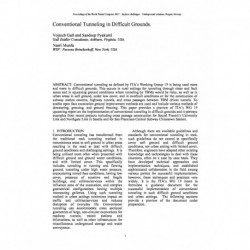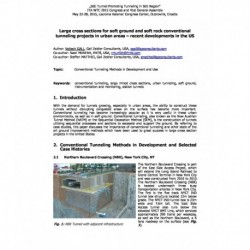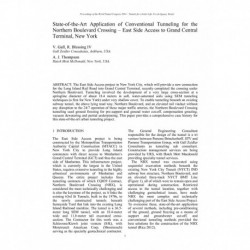No document
Search & filter
Search for a publication
Search & filter
List of products by author: V. Gall
-
Conventional Tunneling in Difficult Grounds
Abstract: Conventional tunneling as defined by ITA’s Working Group 19 is being used more and more in difficult grounds. This occurs in rural settings for tunneling through shear and fault zones and in squeezing ground conditions where tunneling by TBMs would be risky, as well as in urban areas in soft ground, under low cover, and in overbuilt conditions or for the construction of subway station caverns,...
0,00 € -
Large cross sections for soft ground and soft rock conventional tunneling projects in urban areas – recent...
Abstract: With the demand for tunnels growing, especially in urban areas, the ability to construct these tunnels without disrupting congested areas on the surface has become more important. Conventional tunneling has become increasingly popular as it is very useful in these urban environments, as well as in soft ground. Conventional tunneling, also known as the New Austrian Tunnel Method (NATM) or the...
0,00 € -
State-of-the-Art Application of Conventional Tunneling for the Northern Boulevard Crossing – East Side Access...
Abstract: The East Side Access project in New York City, which will provide a new connection for the Long Island Rail Road into Grand Central Terminal, recently completed the crossing under Northern Boulevard. Tunneling involved the development of a very large cross-section at a springline diameter of about 18.4 meters in soft, water-saturated soils using SEM tunneling techniques...
0,00 €



